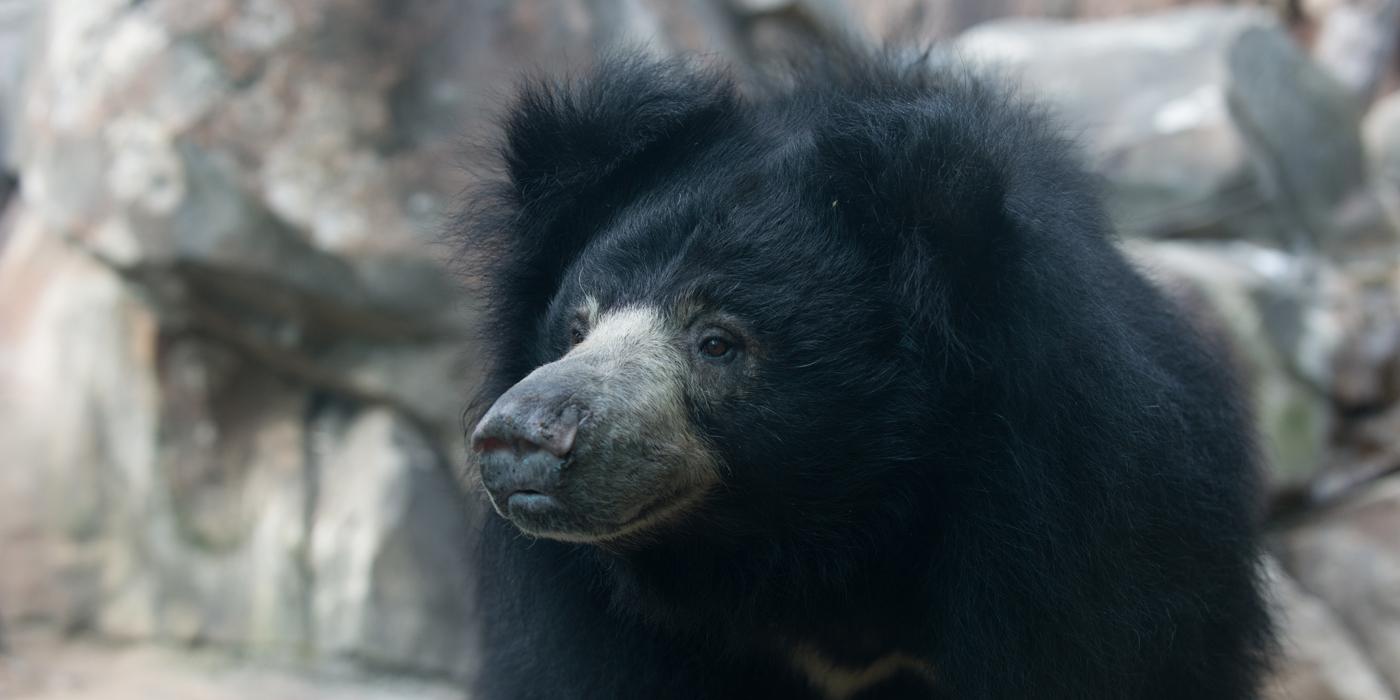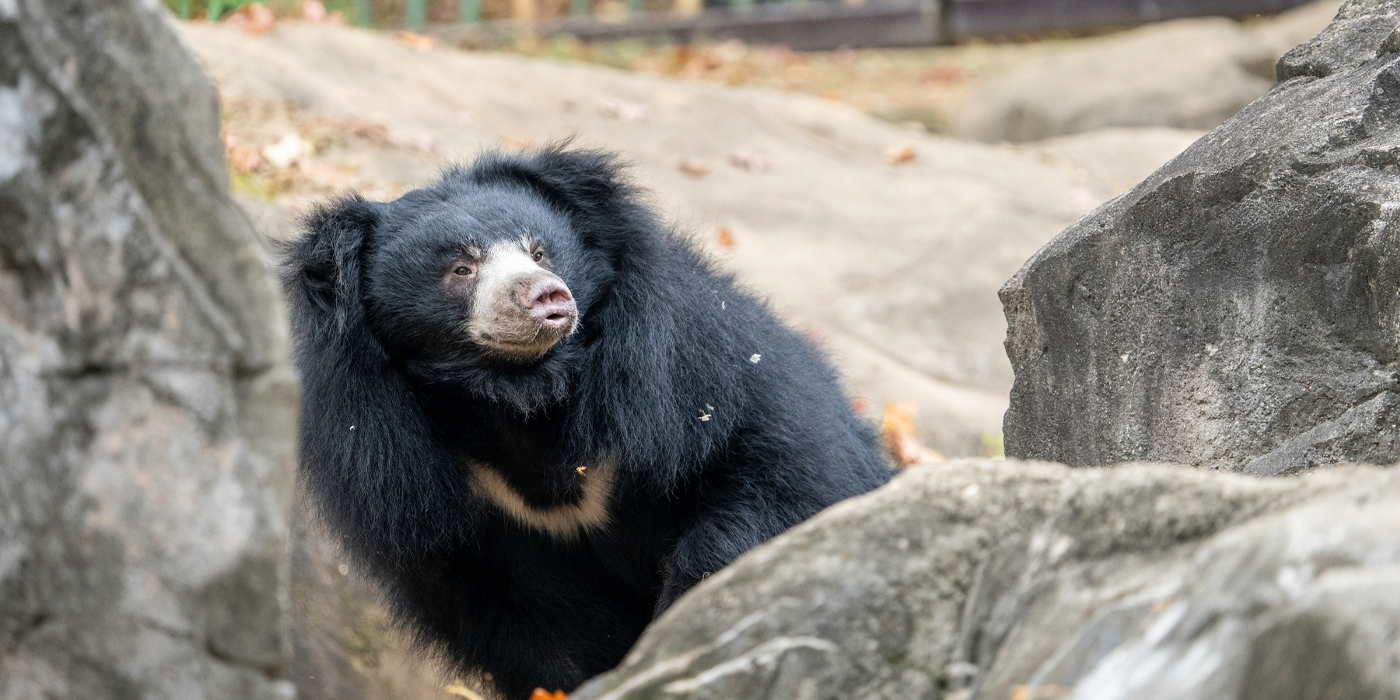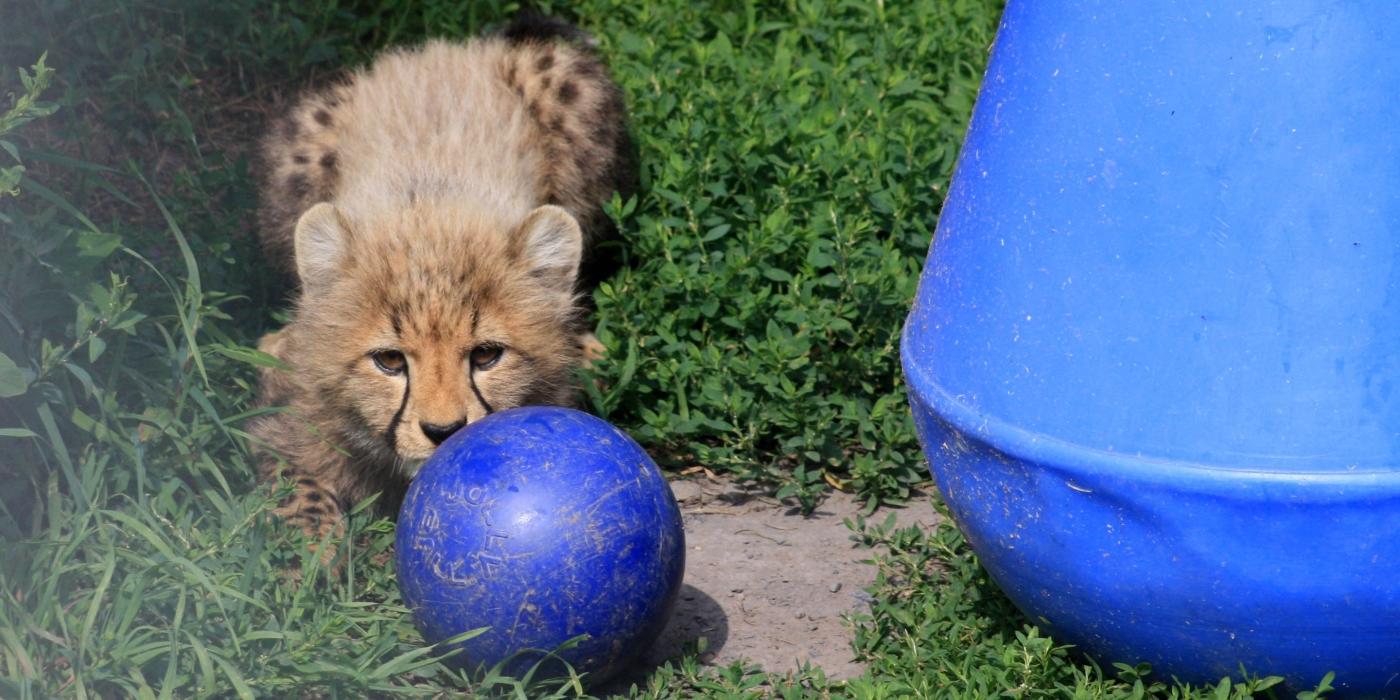Geriatric Sloth Bear Dies at the Smithsonian’s National Zoo
A 21-year-old female sloth bear named Hana was humanely euthanized at the Smithsonian’s National Zoo Monday, Oct. 17. In human care, sloth bears typically have a median life expectancy of early-to-mid 20s.
Hana exhibited signs of lethargy and discomfort as well as a decline in appetite over the weekend. Zoo veterinarians anesthetized her on Monday for an exploratory surgical procedure and found tumors associated with her liver, bile duct and gallbladder. Animal care staff elected to humanely euthanize her based on her poor long-term prognosis. A final pathology report will provide more information in the coming weeks.
Keepers, nutritionists and veterinarians worked together in recent weeks to provide supportive care and treatment for Hana. As part of the Zoo’s enrichment program, keepers trained her to voluntarily participate in routine medical care, including blood draws. Hana’s blood samples revealed elevated liver and biliary enzymes, both indicators of liver and/or gallbladder disease. In addition to a modified diet, she received antibiotics, analgesics, anti-inflammatories and liver protectants. While Hana’s condition initially improved following administration of these medications a few weeks ago, a marked decline in their effectiveness was noted during the past week.
Hana was born at the Warsaw Zoo in Poland in 1994 and came to the National Zoo in 1998. She gave birth to two surviving cubs after receiving breeding recommendations from the sloth bear Species Survival Plan. Both cubs, Balawat and Hank, were born at the National Zoo in 2006 and 2012, respectively. Keepers described Hana as a very relaxed bear who would appear almost to hold meditative poses—grabbing her toes and breathing deeply.
Native to India, Sri Lanka and Nepal, sloth bears are not related to sloths but were given that moniker by English settlers who named them due to their dark, shaggy coat and long claws. A gap in the bears’ teeth enables them to suck up ants, termites and other insects. Sloth bears are considered vulnerable to extinction by the International Union for Conservation of Nature. Fewer than 20,000 remain in these countries due to habitat destruction and increased agricultural activity.
Visitors can see sloth bears Hank and female Remi at the Zoo’s Asia Trail exhibit, weather permitting.
# # #
Photo Credit: Abby Wood, Smithsonian’s National Zoo
Related Species:




